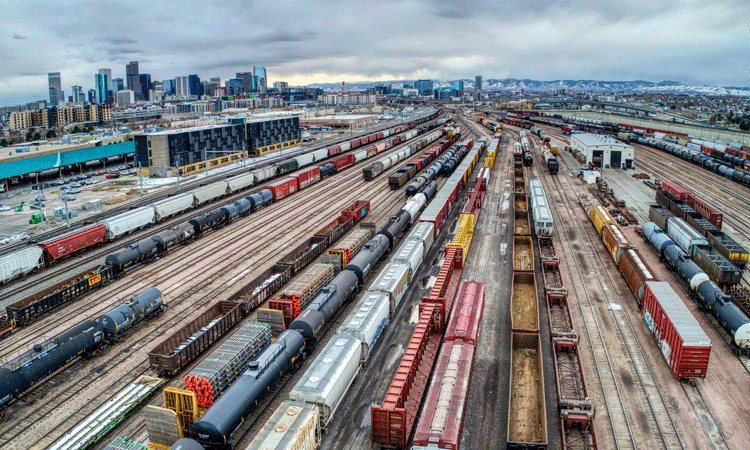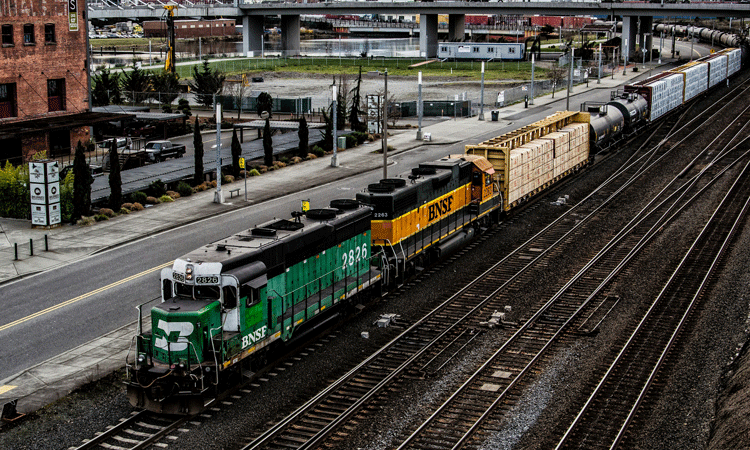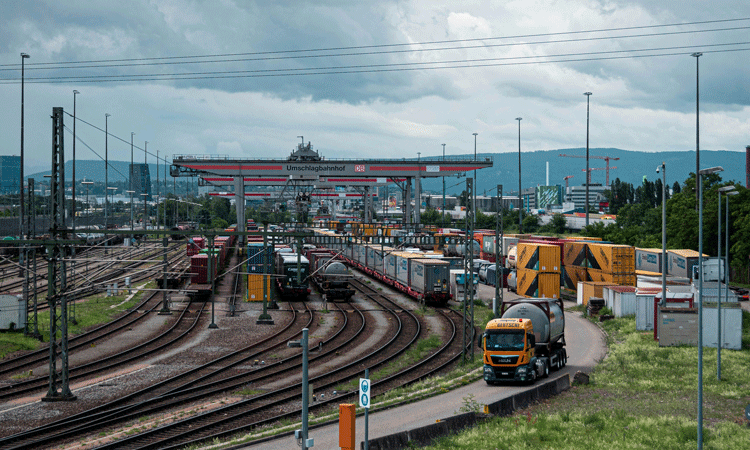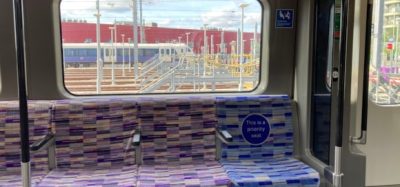Overcoming cross‑border rail challenges with managed transportation
Posted: 29 April 2025 | Nick Fryer - Sheer Logistics | No comments yet
Nick Fryer, Vice President of Marketing at Sheer Logistics, discusses the complexities/challenges facing cross-border rail today and how leveraging technologies through a managed transportation approach can mitigate these risks.


c: Sheer Logistics
In an increasingly globalised economy, achieving efficient cross-border rail operations is essential for businesses looking to maintain competitiveness. Avoiding common pitfalls such as delays, unplanned re-routing, unanticipated customs charges and other issues is critical to smooth supply chain operations and maintaining positive end-customer relationships.
Managed transportation helps optimise such operations through advanced planning, coordination and technology.
Managed transportation helps optimise such operations through advanced planning, coordination and technology. This approach addresses the unique challenges of cross-border rail transport, improving visibility, enhancing reliability, reducing costs and improving overall efficiency.
By moving to a managed transportation approach, companies can ensure they have anticipated every eventuality before shipments set out from their point of origin.
The role of managed transportation in enhancing cross-border rail operations
Managed transportation services provide a comprehensive management solution, anticipating and addressing the complexities of cross-border rail operations. Whether it’s shipping from the U.S. to Canada or Mexico into the U.S., or crossing the EU into Asia, partnering with an experienced managed transportation provider will help mitigate the risks and challenges of cross-border rail shipping.
By adopting such services, businesses benefit from:
- Specialised expertise, including local regulations and customs compliance
- Advanced technology, to optimise transport routes, provide real-time tracking and anticipate delays
Strategic planning to navigate the intricacies of international rail logistics.
Managed transportation is key to optimising cross-border rail operations, ensuring compliance with regulations, and facilitating smoother transit across borders.


c: Sheer Logistics
Key challenges in cross-border rail operations
What are the difficulties shippers face when transporting goods over international borders by rail?
Four common issues plague shippers:
1. Customs restrictions
Each country has its own set of highly specific restrictions that prohibit the import or export of shipments of hazardous materials, controlled substances, endangered species, weapons, counterfeit goods and other items that pose a risk to safety, health, the environment, or national security.
An expert-managed transportation services provider will help you navigate the intricacies of these restrictions and will be able to check your manifest to ensure no such goods are going to be transported. This should happen before the shipment is finalised.
2. Inadequate documentation
Customs officials will want to inspect your shipment documentation, including your Bill of Lading. If it is insufficiently detailed or clear, then this could cause significant delays, causing a domino effect that can imperil the timeliness of the scheduled journey.
Combining both expertise and automation technology, an experienced managed transportation provider will produce pristine and complete shipping documentation. Their intimate knowledge of the complexities of each country’s customs requirements can help shippers avoid the pitfalls related to customs documentation.
3. Import tariffs
Import tariffs are the taxes the importing country’s government will charge companies when importing certain goods. They are frequently imposed when countries have trade disagreements, meaning that they can change drastically at relatively short notice.
Your managed transportation expert should have up-to-date information on such tariffs so that you are prepared to pay them at border crossings.
4. Rail gauge breaks
This is a technical issue more relevant in South America, Africa and Europe where adjacent countries have tracks of different gauges, meaning that rolling stock must either change engines and freight car wheelbases or use a variable gauge axle system such as that Spain recently developed.
Then, of course, there are unforeseeable factors, such as political conflict or war, natural disasters, or extreme weather. Here, managed transportation’s role is to anticipate such events and react quickly when they occur
The worst-case scenario is the manual unloading and reloading of goods or containers from one train to another, which can cause significant delays and expenses. Again, such complexities should be factored in by your managed transportation provider.
Then, of course, there are unforeseeable factors, such as political conflict or war, natural disasters, or extreme weather. Here, managed transportation’s role is to anticipate such events and react quickly when they occur, with strategically viable alternative routes or solutions.


c: Sheer Logistics
Leveraging technology for enhanced cross-border rail efficiency
Technological innovation has recently transformed cross-border rail operations.
Through the adoption of managed transportation solutions, businesses can leverage cutting-edge technologies such as:
- Transportation Management Systems (TMS) – to provide a “control tower” view of your multimodal transportation operations, including rail
- Real-time transportation visibility platforms (RTTVP) – to provide up-to-the-minute knowledge of where a shipment is, and to automatically send alerts and notifications when a shipment strays from its intended route or is on pace to be delivered late
- Advanced analytics – such as predictive analytics that use past data to predict risks and prescriptive analytics that can propose alternative routes or shipping methods
- Automated compliance tools – to ensure that all local restrictions, documentation requirements and tariffs have been considered and prepared for
- Integration middleware – that connects disparate systems and ensures the steady flow of timely, accurate and normalised data.
These technologies facilitate better decision making, optimise route planning and ensure adherence to cross-border regulations, significantly enhancing the efficiency and reliability of rail operations.
Why you should consider a managed transportation partner for cross‑border rail operations
If your cross-border rail operation is challenged, a managed transportation partner can deliver a host of benefits:
1. Streamline compliance and documentation processes
Effective managed transportation entails a thorough understanding of the regulatory requirements and documentation processes for each country involved in cross-border rail operations.
Adopting the expertise of a managed transportation provider can significantly reduce the complexity and time associated with compliance and documentation.
2. Optimise route and carrier selection
Through managed transportation services, businesses can benefit from optimised route planning and carrier selection, considering cost, reliability and speed.
This strategic selection is critical for mitigating delays and ensuring efficient cross-border transit.
3. Implement real-time tracking and communication
Real-time tracking systems and open lines of communication are essential for managing the dynamics of cross-border rail operations.
These technologies enable proactive responses to potential delays and ensure timely updates to all stakeholders.
4. Embrace technological integration
Integrating advanced technologies such as a TMS (for overall supply chain visibility and control), AI (for intelligent routing), IoT (for railcar or package level tracking), and analytics (both predictive and prescriptive) can further streamline cross-border rail operations.
These technologies offer enhanced tracking, improved security and greater transparency throughout the supply chain. Advanced managed transportation providers employ integration middleware that can connect these disparate systems and accelerate TMS implementation.
Overcoming the challenges of cross-border rail operations demands a strategic approach, where managed transportation plays a critical role.
By utilising expert knowledge, advanced technology and strategic planning, businesses can navigate the complexities of international rail logistics with greater ease and efficiency.
The integration of managed transportation services allows shippers to streamline operations, increase visibility, reduce costs and improve reliability. In an increasingly global marketplace, your supply chain can be a competitive advantage. A managed transportation partnership can provide you with the strategic expertise, visibility and control you need to take your performance to the next level and achieve your goals.


Issue
Related topics
Cargo, Freight & Heavy-Haul, Digitalisation, Freight, Interoperability & Liberalisation, Operational Performance, Regulation & Legislation, Technology & Software, Track Systems








